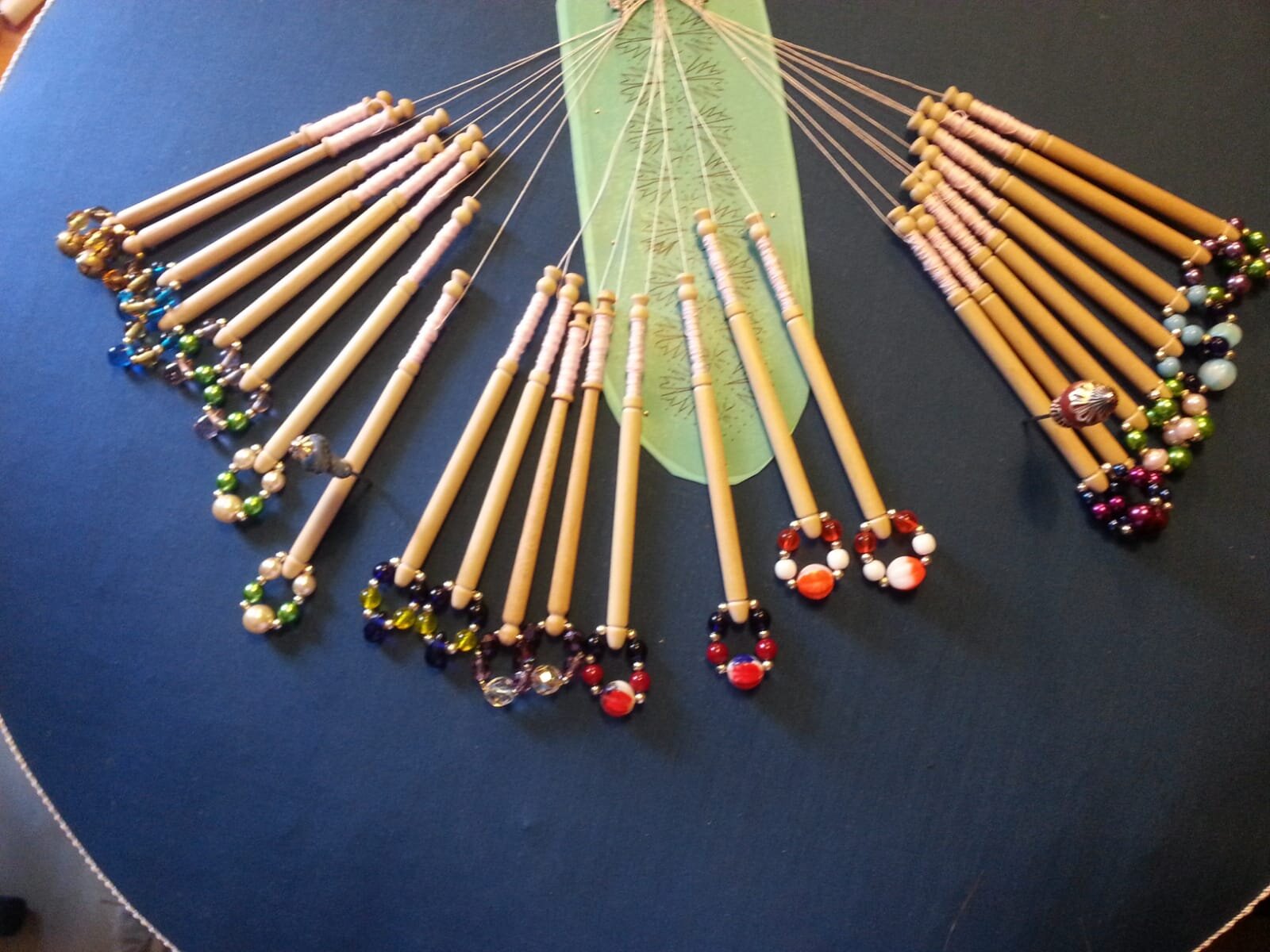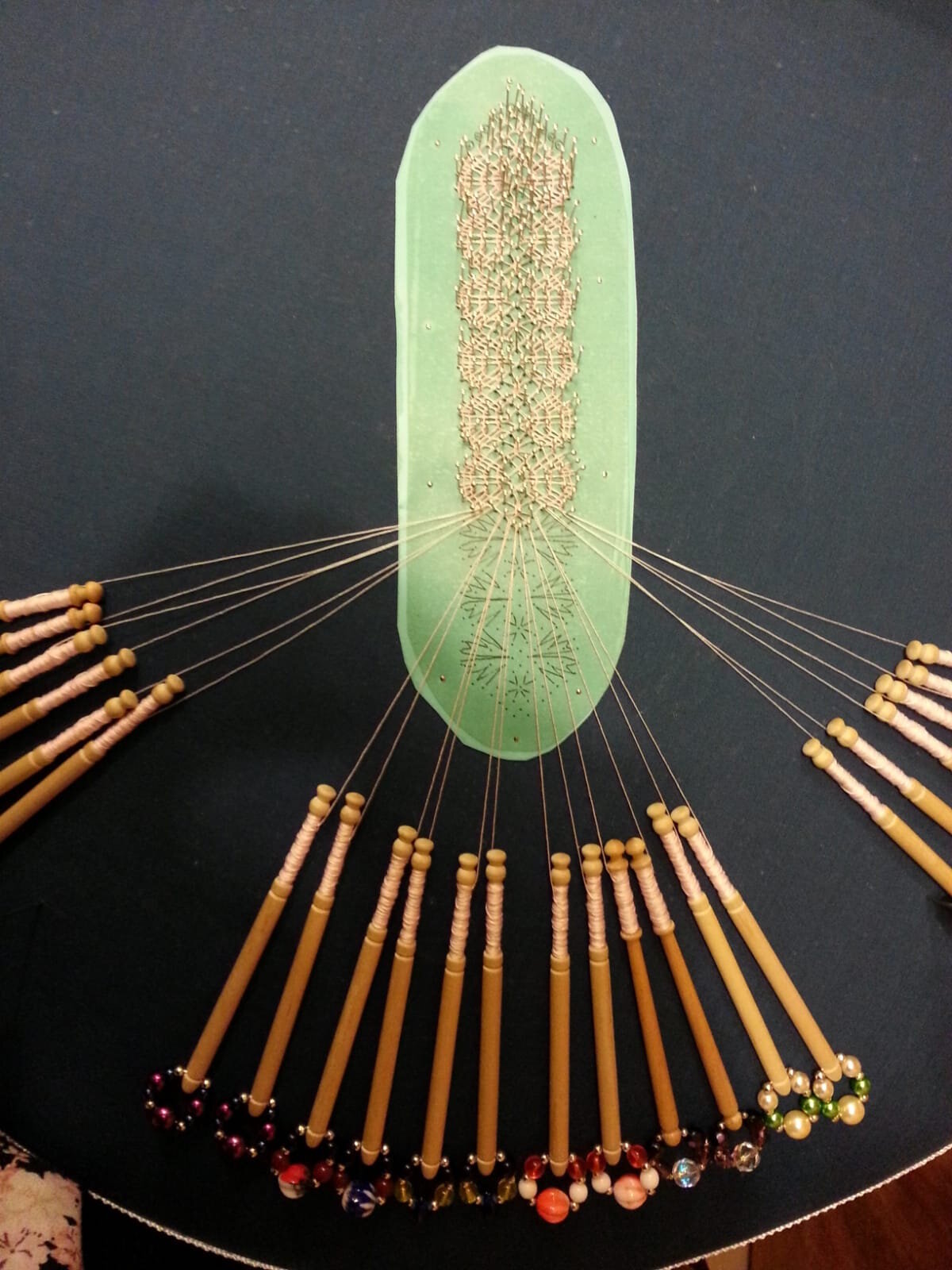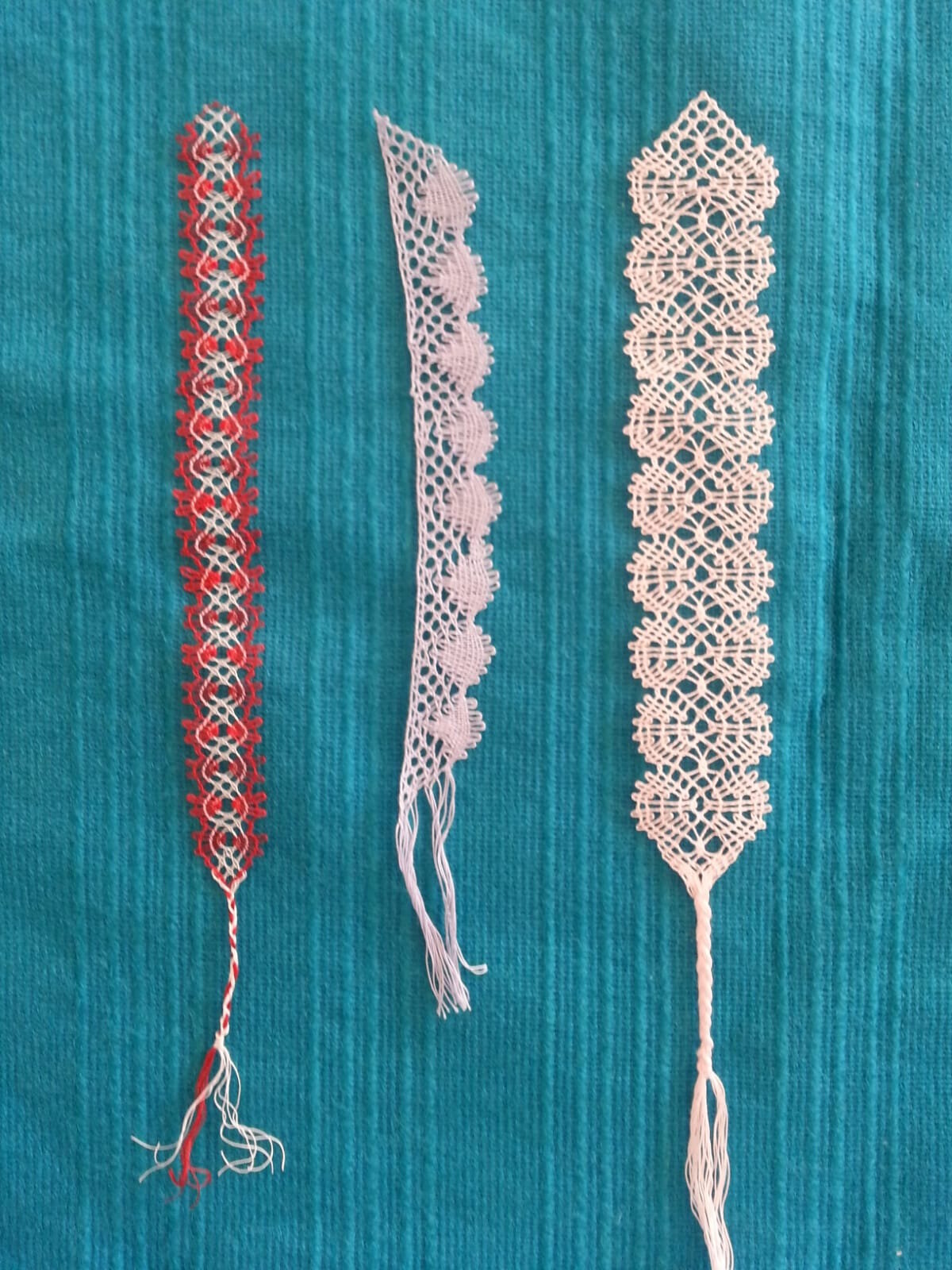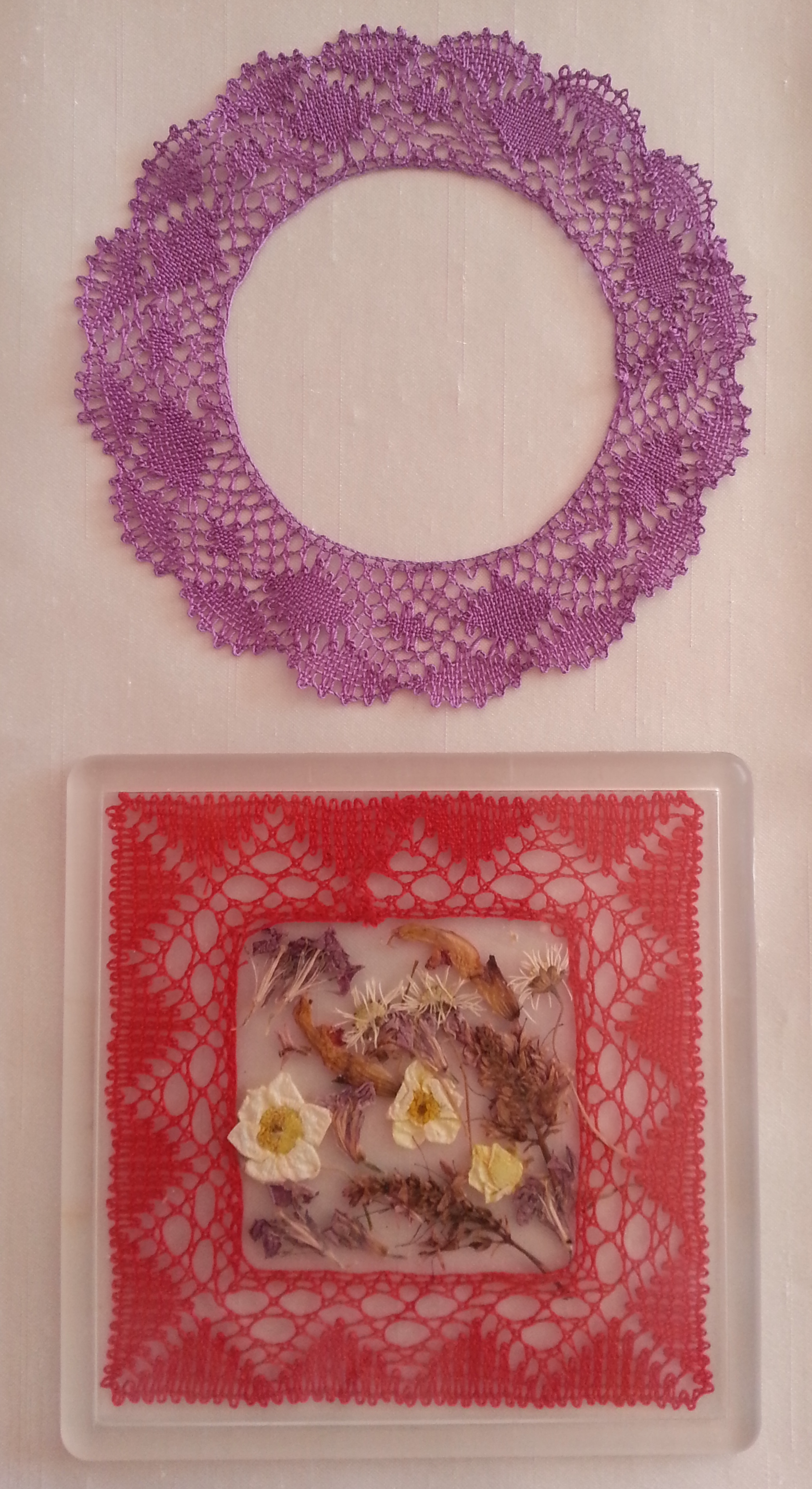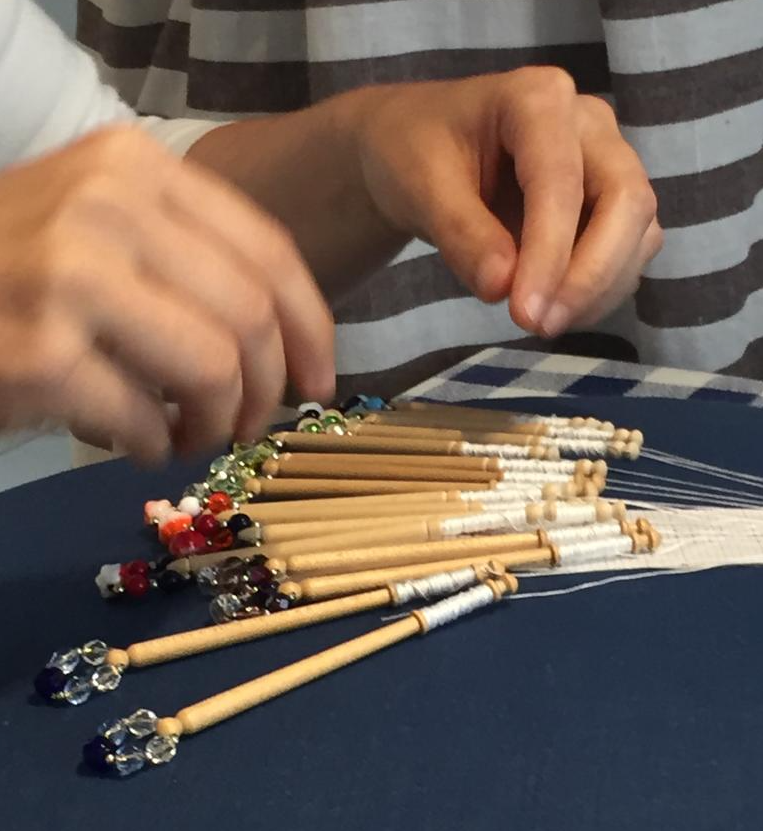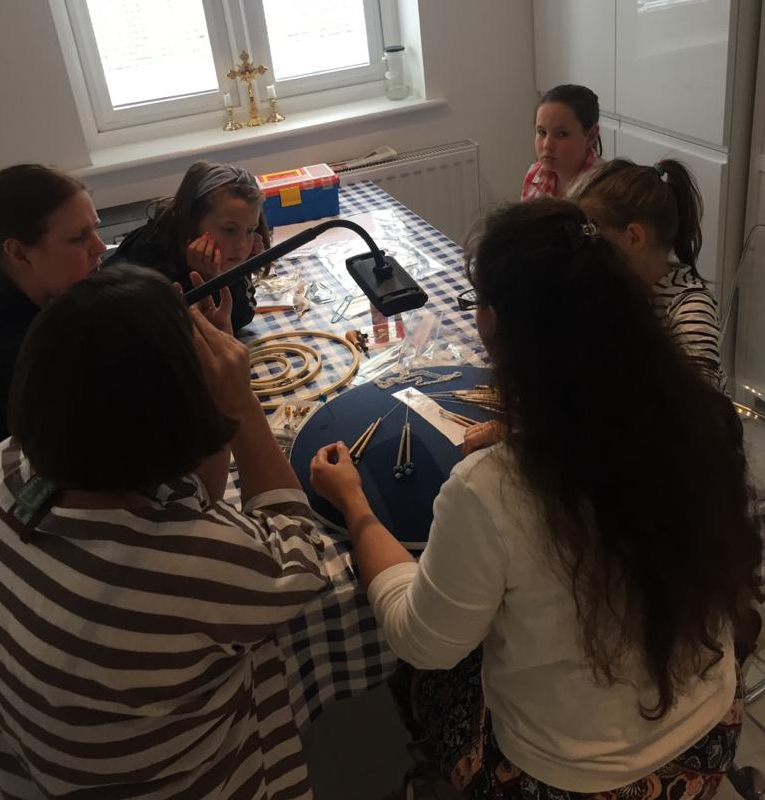I wanted to learn this form of lace because these techniques can be used to make beautiful embellishments to communion or wedding veils.
The base layer is a net, with organdie laid on top. The design is then applied using a series of couching stitches and then the organdie is cut away in the background areas to expose the mesh. A fine thread is weaved in between the net to create a lacy look. This creates an illusion of depth and layering of the design (i.e. foreground, middle-ground and background). It’s finished off with a few eyelets in the mesh and loops around the edges to give it a nice finished border.
Here I have used the harp and shamrock pattern designed by the Carrickmacross Lace Gallery in Co. Monaghan, Ireland.








